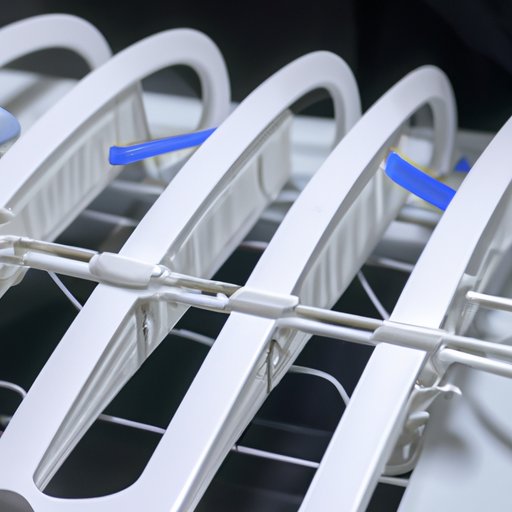Introduction
A dryer is an essential household appliance used to dry wet laundry. It is also known as a clothes dryer or tumble dryer. It works by using heated air to evaporate the moisture from the clothes. The heated air is then vented out of the dryer, leaving the clothes dry.
In order to understand how a dryer works, it is important to know the different components and parts involved in its operation. These include heating elements, fans, lint filters, and other controls. Each of these components plays an important role in ensuring that the dryer operates efficiently and effectively.
Step-by-Step Guide to Understanding a Dryer’s Operation
As mentioned above, a dryer has several components and parts that work together to make sure that the dryer operates properly. Here is a step-by-step guide to understanding the operation of a dryer:
How Heating Elements and Fans Work Together
The first step in understanding a dryer is to understand how the heating elements and fans work together. The heating elements are responsible for heating up the air inside the dryer. This hot air is then circulated by the fans to ensure that the air is evenly distributed throughout the dryer. This hot air helps to evaporate the moisture from the clothes, leaving them dry.
Exploring the Different Components and Their Functions
The next step in understanding a dryer is to explore the different components and their functions. The lint filter catches any lint or debris that may be present in the dryer. This helps to keep the machine clean and free of any potential damage. Other components, such as the thermostat, help to regulate the temperature of the air inside the dryer. Finally, the timer allows the user to set how long the dryer will run for. All of these components work together to ensure that the dryer operates efficiently and effectively.
The Science Behind Clothes Drying: How Does a Dryer Work?
Now that we have explored the different components and their functions, let’s dive into the science behind how a dryer works. In order to understand this, we must first understand the process of heat exchange. Heat exchange is the process by which energy is transferred from one object to another.
When the heating elements in a dryer heat up the air inside, they transfer energy to the air molecules. This causes the air molecules to move faster and become less dense. As the air molecules move around, they come into contact with the wet clothes. This causes the water molecules on the clothes to absorb the energy from the air molecules, causing them to evaporate. The evaporated water molecules then leave the clothes, leaving them dry.
It is important to note that the dryer must be able to maintain a certain temperature in order for the evaporation process to occur. If the temperature is too low, the water molecules on the clothes will not absorb enough energy to evaporate. On the other hand, if the temperature is too high, the clothes could be damaged due to the excessive heat.
Conclusion
In conclusion, a dryer is an essential household appliance used to dry wet laundry. It works by using heated air to evaporate the moisture from the clothes. This is done through the process of heat exchange, whereby energy is transferred from the heating elements to the air molecules, which then come into contact with the wet clothes and cause the water molecules on the clothes to evaporate. The different components and parts of a dryer, such as the heating elements, fans, lint filter, and thermostat all play an important role in ensuring that the dryer operates efficiently and effectively.
(Note: Is this article not meeting your expectations? Do you have knowledge or insights to share? Unlock new opportunities and expand your reach by joining our authors team. Click Registration to join us and share your expertise with our readers.)
